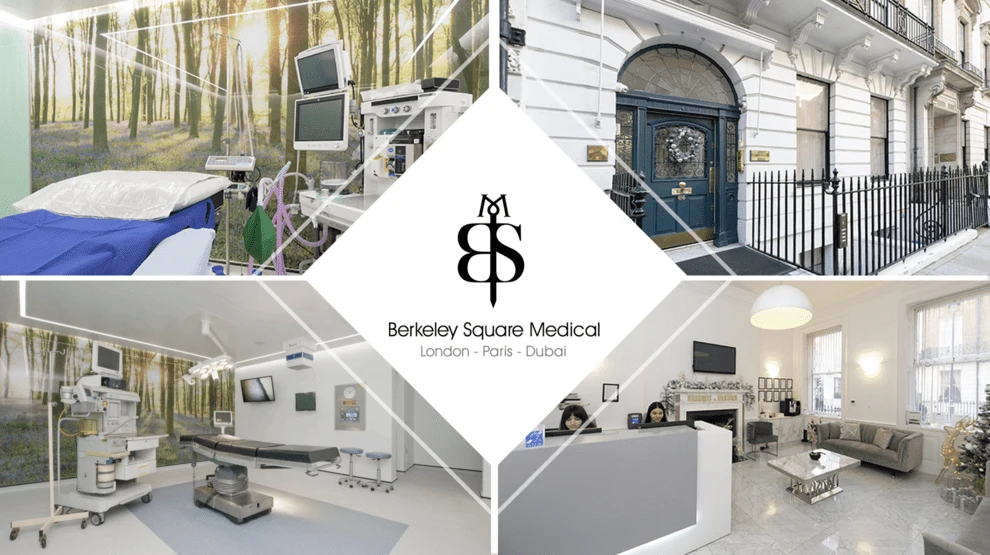 |
BREAST LIFT COST
£7950.00
BREAST LIFT WITH IMPLANTS COST
£8995.00
This is an All-Inclusive set price for this surgery and includes the full cost of your procedure including your £100.00 consultation which is credited against the cost of your surgery.

|
Consultation Cost:
£100.00
Your Consultation Is Credited When Booking Your Procedure
|

|
All-Inclusive Care Included:
Complimentary Chauffeur Drive Home After Your Surgery In London.
|
 |
Consultation:
Full Consultation With Your Consultant Breast Surgeon.
|
 |
All Additional Items Included:
All Medication And Garments Provided To Take Home.
|
 |
Pre-Operative Assessment Included:
All Pre-Operative MRSA Medical Assessments.
|
 |
After Care Service Included:
Online Messaging Service 24 Hours A Day.
|
 |
Hospital and Anaesthetic Fees Included:
Full Procedure And Stay At Our State Of The Art Hospital Included with Private Room.
|
 |
Post-Operative Appointments Included:
7-Day, 12-Week and 12 Month Post Operative Appointments.
|
FINANCE PACKAGES / COSMETIC LOANS
We do not provide Cosmetic Financing for this Surgery. When considering this surgery, we like to ensure the cost of your treatment is both transparent and clear to understand. The cost outlined above is fully inclusive of your completed procedure with no hidden costs. A Breast lift (mastopexy) consultation and assessment with our surgeon is a comprehensive process designed to determine if you are a good candidate for the procedure, discuss your aesthetic goals, and outline the surgical plan. Here’s what typically happens during this consultation:
Initial Discussion
-
Medical History Review:
- Our surgeon will ask about your overall health, including any past surgeries, medical conditions, and medications or supplements you are currently taking.
- They will inquire about your breast health, including any history of breast cancer or biopsies.
-
Lifestyle and Goals:
- Our surgeon will discuss your reasons for seeking a breast lift and your desired outcomes.
- We may ask about lifestyle factors such as smoking, alcohol consumption, and exercise habits, as these can impact surgery and recovery.
Physical Examination
-
Breast Assessment:
- Our surgeon will conduct a thorough examination of your breasts, assessing size, shape, skin quality, and nipple position.
- Measurements will be taken to evaluate the degree of sagging (ptosis) and skin laxity.
-
Skin and Tissue Quality:
- The elasticity and thickness of your breast skin and tissues will be evaluated to determine the best surgical approach.
Surgical Planning
-
Discussion of Techniques:
- Various surgical techniques for lifting the breasts will be discussed. These might include the anchor, lollipop, or donut (periareolar) incisions.
- Our surgeon will explain where the incisions will be made and how the breast tissue will be reshaped.
-
Implants Discussion (if applicable):
- If you are considering breast implants in addition to a lift (a combination procedure), Our surgeon will discuss implant types, sizes, and placement options.
Risks and Expectations
-
Risks and Complications:
- Our surgeon will outline potential risks and complications associated with the surgery, such as scarring, infection, changes in nipple or breast sensation, and the possibility of needing revision surgery.
-
Recovery Process:
- Information about the recovery period, including activity restrictions, expected downtime, and post-operative care instructions, will be provided.
Visual Aids
-
Before and After Photos:
- Our surgeon may show you before and after photos of previous patients to give you a realistic expectation of the results.
-
Imaging or Simulations:
- Some of our Branches use imaging technology and simulations to help you visualize the potential outcome of your breast lift.
Final Steps
-
Q&A:
- You will have the opportunity to ask any questions you have about the procedure, recovery, or any other concerns.
-
Cost and Financing:
- The financial aspects, including the total cost of the procedure, payment options, and any available financing plans, will be discussed with members of our Breast Clinical Team.
-
Scheduling:
- If you decide to proceed, the next steps will include scheduling the surgery date and pre-operative appointments.
The consultation is a crucial step in ensuring that you and our surgeon are on the same page regarding your goals and expectations and that you are fully informed about the procedure and its implications. A breast lift (mastopexy) surgery is designed to raise and reshape sagging breasts by removing excess skin and tightening the surrounding tissue. Here’s a detailed overview of what happens from start to finish:
Pre-Surgery Preparations
-
Pre-Operative Instructions:
- Our surgeon will provide specific instructions to follow in the days leading up to the surgery, such as avoiding certain medications, fasting before the procedure, and arranging for someone to drive you home.
-
Marking:
- On the day of surgery, our surgeon will make pre-operative markings on your breasts to guide the incisions and tissue adjustments.
During Surgery
-
Anaesthesia:
- The surgery typically begins with the administration of anaesthesia. This can be general anaesthesia, which puts you to sleep, or intravenous sedation combined with local anaesthesia.
-
Incision Making:
- Your surgeon will make the necessary incisions. Common techniques include:
- Anchor Incision: Around the areola, vertically down to the breast crease, and horizontally along the crease.
- Lollipop Incision: Around the areola and vertically down to the breast crease.
- Donut (Periareolar) Incision: Around the areola only.
-
Repositioning and Reshaping:
- The underlying breast tissue is lifted and reshaped to improve breast contour and firmness.
- The nipple and areola are repositioned to a higher, more youthful location. If necessary, enlarged areolas are reduced by excising skin at the perimeter.
-
Excess Skin Removal:
- Any excess breast skin is removed to compensate for a loss of elasticity.
-
Closing the Incisions:
- The incisions are closed with sutures, skin adhesives, or surgical tape.
- Deep sutures within the breast tissue help to support the newly shaped breasts.
Post-Surgery
-
Recovery Room:
- After the surgery, you’ll be taken to your private room where your recovery and wellbeing will be monitored.
- You’ll wake up from anaesthesia under close supervision. The initial recovery phase usually lasts a few hours.
-
Dressings and Support:
- Your breasts will be covered with gauze dressings or bandages.
- You will be provided with a support bra or elastic bandage to minimise swelling and support the breasts as they heal.
Post-Operative Care
-
Immediate Aftercare:
- Detailed post-operative care instructions will be given, including how to care for the surgical site, medications to apply or take orally to aid healing and reduce the risk of infection, and when to follow up with your surgeon.
-
Managing Discomfort:
- Pain and discomfort are common after surgery. Pain medication will be prescribed to manage this.
-
Activity Restrictions:
- You will need to avoid heavy lifting, strenuous activity, and any movements that strain the chest muscles for several weeks.
-
Follow-Up Appointments:
- Follow-up visits with your surgeon will be scheduled to monitor your healing and remove sutures if necessary.
- These appointments are also an opportunity for your surgeon to ensure that the breasts are healing properly and to address any concerns you may have.
Long-Term Recovery
-
Scarring and Final Results:
- Scars will be permanent but will fade over time. Your surgeon will provide advice and certain scar reduction products to minimise the visibility of any incision lines.
- Final results may take several months to become fully apparent as the breasts settle into their new shape.
-
Ongoing Monitoring:
- Regular follow-up appointments may be recommended to ensure long-term satisfaction with the results.
By understanding these steps, you can be better prepared for what to expect during and after a breast lift surgery. Always follow your surgeon’s specific instructions and attend all follow-up appointments to ensure a smooth recovery and optimal results. Immediate Post-Surgery Recovery
-
First 24-48 Hours:
- You may experience soreness, swelling, and bruising. Pain and discomfort are common, and your surgeon will prescribe pain medication to manage this.
- It’s essential to have someone drive you home and assist you during this initial period.
First Week Post-Surgery
-
Rest and Limited Activity:
- Rest is crucial. Avoid any strenuous activities or movements that can strain the chest muscles.
- Sleep on your back with your upper body elevated to reduce swelling and discomfort.
-
Wound Care:
- Follow your surgeon’s instructions on caring for the incision sites. This typically includes keeping the area clean and dry and changing dressings as directed.
- Wear the provided support bra or elastic bandage at all times to support your breasts and minimize swelling.
-
Medication:
- Take prescribed antibiotics to prevent infection and painkillers to manage discomfort.
1-2 Weeks Post-Surgery
-
Follow-Up Appointment:
- You will have a follow-up appointment with our clinical team to check the healing progress, remove any non-dissolvable sutures, and address any concerns.
-
Resuming Light Activities:
- You may begin to resume light, non-strenuous activities as you feel able, but avoid heavy lifting, vigorous exercise, and any activity that involves excessive arm or chest movement.
2-4 Weeks Post-Surgery
-
Gradual Increase in Activity:
- Gradually increase your activity level based on your comfort and surgeon’s advice. Most patients can return to work and normal daily activities within 1-2 weeks, depending on the nature of their job.
-
Ongoing Support:
- Continue wearing a supportive bra without underwires as directed by your surgeon to maintain breast shape and support healing tissues.
4-6 Weeks Post-Surgery
-
Resuming Exercise:
- You can typically start light exercise around 4-6 weeks post-surgery, avoiding high-impact activities and any exercise that heavily involves the chest muscles.
-
Scarring Management:
- Your surgeon may recommend scar care treatments such as silicone sheets, gels, or massages to help minimize scarring.
Long-Term Recovery (6 Weeks and Beyond)
-
Final Healing:
- Swelling and changes in breast shape will continue to settle over the next few months. The final results may not be fully apparent until 6 months to a year after surgery.
-
Monitoring and Maintenance:
- Attend all scheduled follow-up appointments to monitor your healing progress.
- Maintain a healthy lifestyle, including proper nutrition and regular exercise, to help preserve the results of your breast lift.
Tips for Optimal Recovery
- Avoid Smoking and Alcohol: These can impair healing and increase the risk of complications.
- Hydrate and Eat Healthily: Proper nutrition and hydration aid in the healing process.
- Follow Instructions: Adhere strictly to your surgeon’s post-operative care instructions to minimize risks and complications.
- Communicate Concerns: Immediately report any unusual symptoms such as excessive pain, swelling, redness, or discharge to your surgeon.
By following these guidelines and maintaining close communication with your surgeon, you can help ensure a smooth recovery and achieve the best possible outcome from your breast lift surgery. Breast lift (mastopexy) surgery, like any surgical procedure, carries potential risks and complications. It’s important to be aware of these risks to make an informed decision. Here are some of the primary risks associated with breast lift surgery:
Common Risks
-
Scarring:
-
Pain and Discomfort:
- Pain, tenderness, and discomfort are common after the surgery. This is typically managed with prescribed pain medication.
-
Swelling and Bruising:
- Swelling and bruising around the surgical area are common and usually subside within a few weeks.
Specific Surgical Risks
-
Infection:
- There’s a risk of infection at the incision sites. This can often be prevented with proper wound care and antibiotics, but in rare cases, it may require further medical intervention.
-
Bleeding or Hematoma:
- Post-surgical bleeding or hematoma (a collection of blood outside of blood vessels) can occur, potentially requiring additional surgery to drain accumulated blood.
-
Poor Healing:
- Poor wound healing, including delayed healing or wound separation, can occur, especially in smokers or individuals with certain medical conditions.
-
Changes in Nipple or Breast Sensation:
- Sensation in the nipples or breasts may temporarily or permanently change. Some patients experience increased sensitivity, numbness, or a loss of sensation.
-
Asymmetry:
- While surgeons strive for symmetrical results, perfect symmetry is not always achievable. Some asymmetry in breast size, shape, or nipple position may occur.
Long-Term Risks
-
Recurrence of Sagging:
- Over time, gravity, aging, weight fluctuations, and pregnancy can cause the breasts to sag again, potentially requiring additional surgery.
-
Breastfeeding Difficulties:
- While many women can still breastfeed after a breast lift, there is a risk of reduced ability to produce milk due to changes in breast tissue and ducts.
Aesthetic Concerns
-
Unfavorable Scarring:
- In some cases, scars may not heal as expected and can become widened, raised, or pigmented differently from the surrounding skin.
-
Unsatisfactory Results:
- The final appearance of the breasts may not meet the patient’s expectations in terms of shape, size, or overall aesthetic outcome, possibly necessitating revision surgery.
Rare but Serious Risks
-
Anesthesia Complications:
- Reactions to anaesthesia, while rare, can be serious and include respiratory or cardiac issues.
-
Deep Vein Thrombosis (DVT) and Pulmonary Embolism:
- Blood clots can form in the deep veins of the legs and travel to the lungs, posing a serious health risk. This is more common in prolonged surgeries and requires preventive measures.
-
Fat Necrosis:
- In some cases, fatty tissue deep within the skin might die, leading to firm areas within the breast.
Preventive Measures and Mitigation
- Choosing a Qualified Consultant Surgeon: Ensuring your surgeon is a Consultant and on the Specialist Registrar with the General Medical Council UK, and has extensive experience in breast lift surgeries can significantly reduce risks.
- Pre-Surgical Health Assessment: A thorough health assessment and discussion of your medical history with your surgeon will help identify potential risks.
- Following Post-Operative Care Instructions: Adhering to the aftercare instructions provided by your surgeon can prevent many complications, such as infection and poor healing.
- Lifestyle Adjustments: Maintaining a healthy lifestyle, avoiding smoking, and following a balanced diet can improve healing and overall outcomes.
Understanding these risks helps you make an informed decision about undergoing breast lift surgery. It’s crucial to discuss these risks and any concerns you have with your surgeon during the consultation process. |














